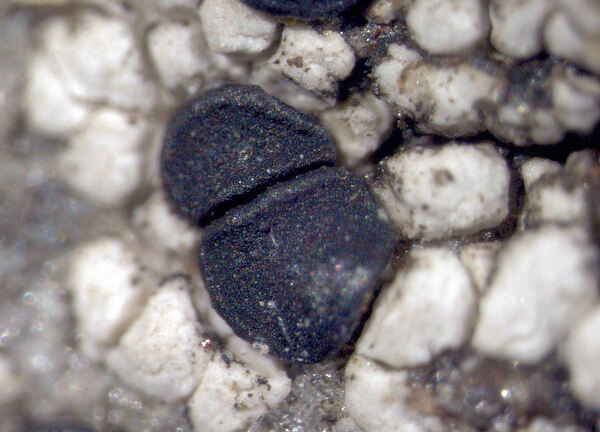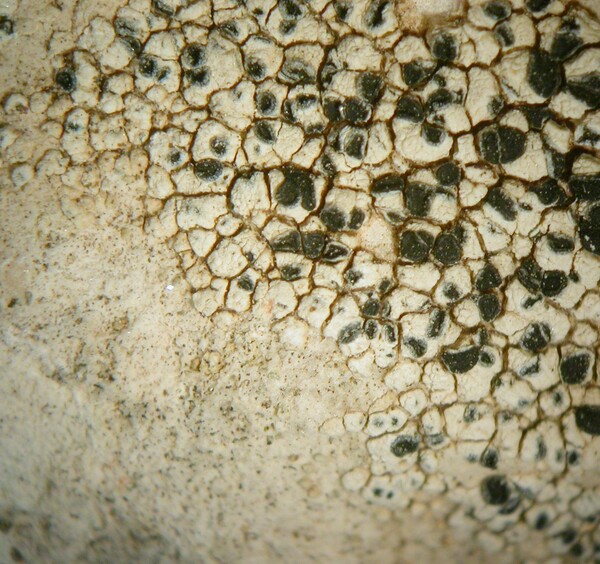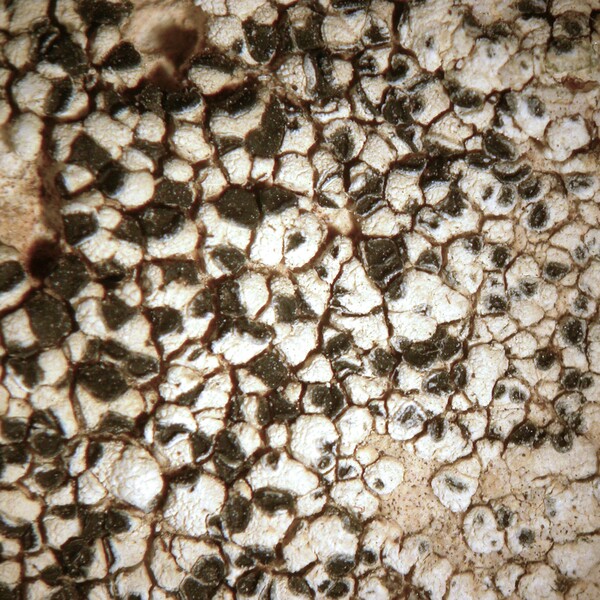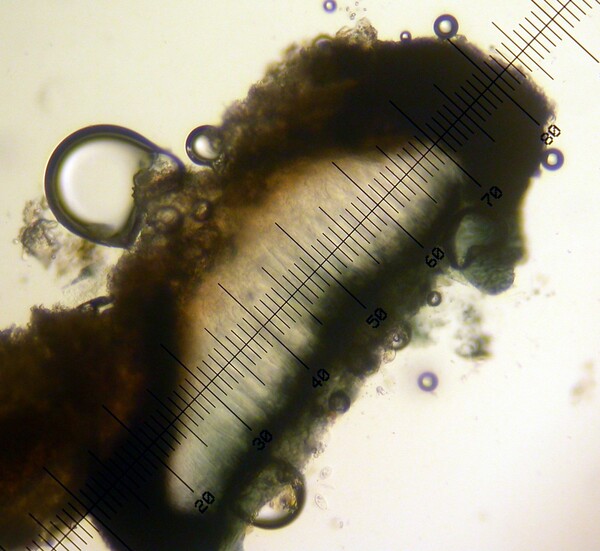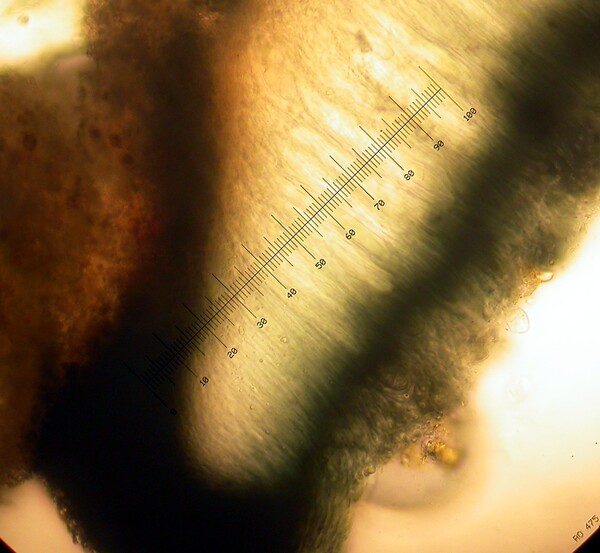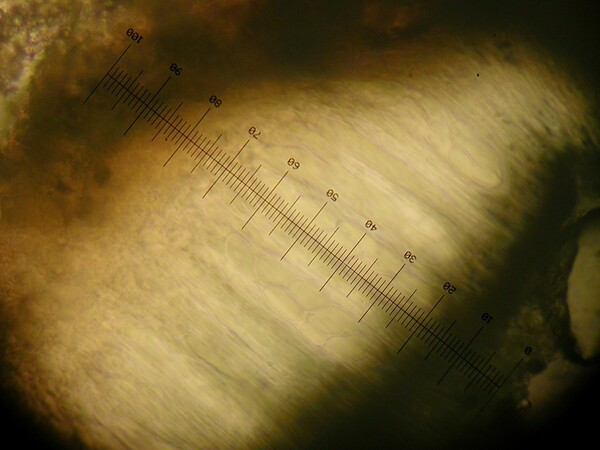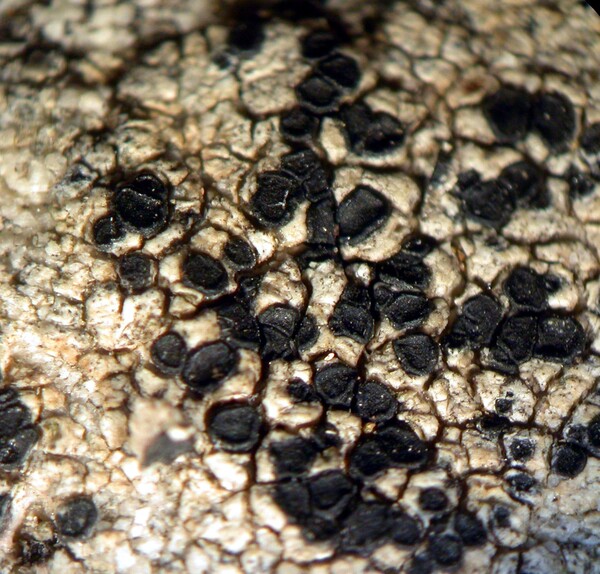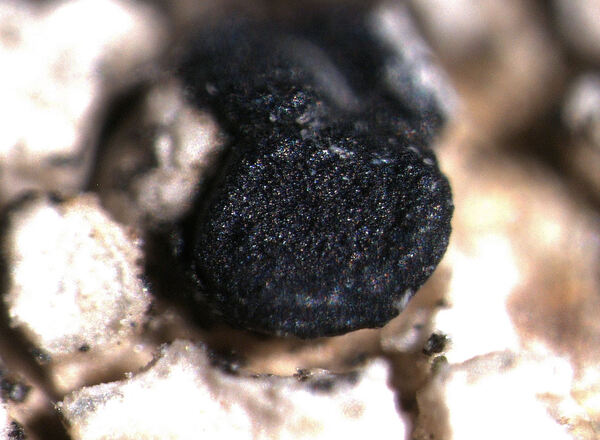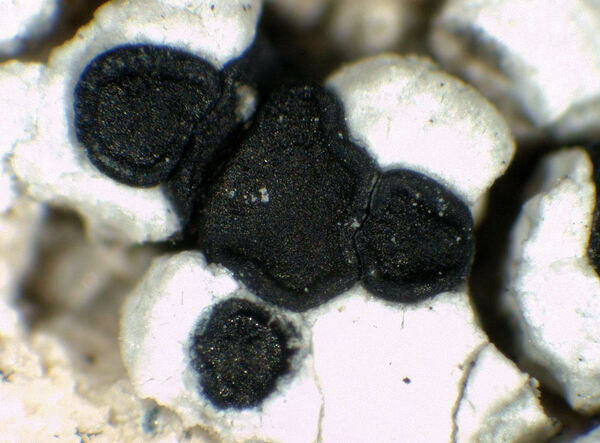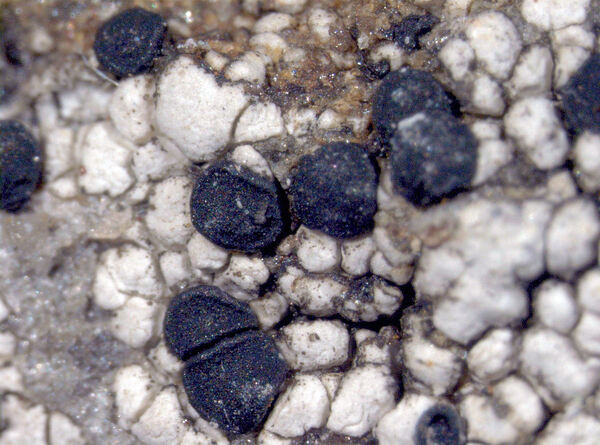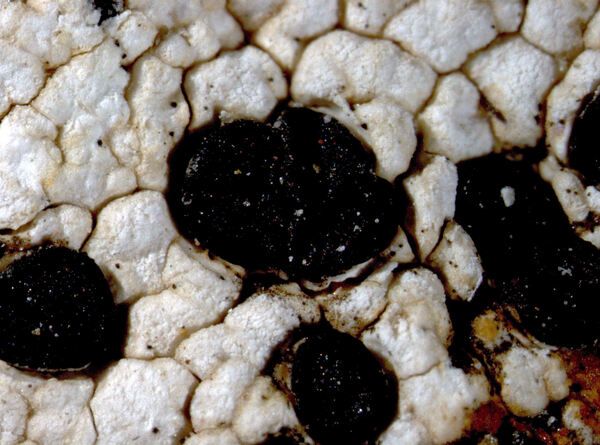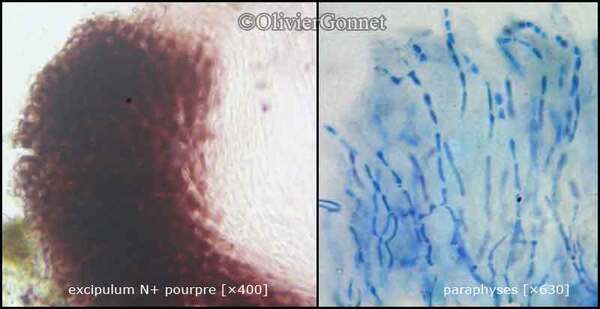Farnoldia micropsis (A. Massal.) Hertel
Mitt. bot. Staatss. München, 19: 443, 1983. Basionym: Lecidea micropsis A. Massal. - Atti Ist. Ven. Sc. Lett. Arti, ser. 3, 2: 18, 1857.
Synonyms: Lecidea dusenii Lynge; Lecidea hornii Lynge; Lecidea macrospora Lynge; Lecidea nivalis Anzi; Lecidea nivalis var. lutescens Anzi; Lecidea rhaetica f. lutescens (Anzi) Jatta; Lecidea rhaetica Hepp ex Th. Fr.; Lecidea rhaetica var. micropsis (A. Massal.) Dalla Torre & Sarnth.; Lecidea valpellinensis B. de Lesd.; Lecidella micropsis (A. Massal.) Körb.; Lecidella rhaetica (Th.Fr.) Körb.; Melanolecia micropsis (A. Massal.) Hertel; Tremolecia nivalis (Anzi) Hertel
Distribution: N - Frl (TSB 10956), Ven (Ravera & al. 2020), TAA (Nascimbene 2008b, Hertel & Schuhwerk 2010, Nascimbene & al. 2022), Lomb, Piem (Isocrono & al. 2004), VA (Piervittori & Isocrono 1999), Lig, Emil. C - Abr (Nimis & Tretiach 1999, Gheza & al. 2021). S - Camp (Aprile & al. 2003b), Cal (Puntillo 1996).
Description: Thallus crustose, episubstratic, up to 1.5 mm thick, warted-areolate, chalky white, dirty white or ochraceous, without a distinct prothallus, the areoles contiguous or scattered, flat to convex. Medulla white, usually I+ blue. Apothecia lecideine, black, epruinose, (0.3-)0.5-1.5(-2) mm across, with a flat to strongly convex disc and a thin, soon excluded proper margin. Proper exciple black, 40-60 µm thick laterally; epithecium green-black to brownish black; hymenium colourless or pale green-brown in upper part, 80-120 μm high; paraphyses coherent, branched and anastomosing, 1.7-2.2 µm thick at mid-level, the apical cells to 3.5 µm wide; hypothecium pale to dark brown, much paler than exciple. Asci 8-spored, clavate, with a I+ pale blue tholus and a central amyloid tube, approaching the Porpidia-type. Ascospores 1-celled, hyaline, ellipsoid, (15-)17-25(-32) x (7-)10-14(-16) µm, halonate at least when young. Photobiont chlorococcoid. Spot tests: thallus K-, C-, KC-, P-, UV-. Chemistry: without lichen substances.Note: an arctic-alpine, circumpolar species, with optimum on calciferous sandstone and schists, rarer on limestone and dolomite, mostly on inclined faces; common in only the Alps, with optimum in the alpine and nival belts.
Growth form: Crustose
Substrata: rocks
Photobiont: green algae other than Trentepohlia
Reproductive strategy: mainly sexual
Commonnes-rarity: (info)
Alpine belt: rather common
Subalpine belt: rather rare
Oromediterranean belt: very rare
Montane belt: absent
Submediterranean belt: absent
Padanian area: absent
Humid submediterranean belt: absent
Humid mediterranean belt: absent
Dry mediterranean belt: absent
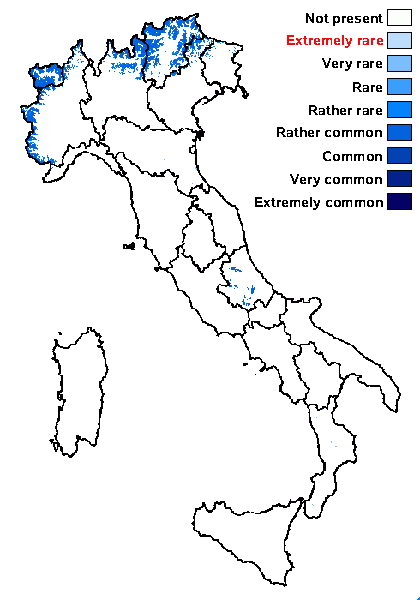
Predictive model
Herbarium samples


P.L. Nimis; Owner: Department of Life Sciences, University of Trieste
Herbarium: TSB (32923)
2001/12/09
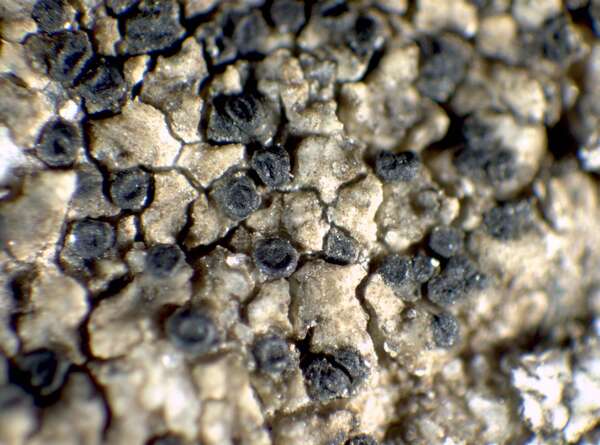

P.L. Nimis; Owner: Department of Life Sciences, University of Trieste
Herbarium: TSB (32923)
2001/12/09

Courtesy Danièle et Olivier Gonnet - Source: https://www.afl-lichenologie.fr/Photos_AFL/Photos_AFL_F/Farnoldia_micropsis.htm
France, Pré des Fabres, alt. 2022 m - sur bloc calcaire - Uvernet-Fours - Alpes-de-Haute-Provence
23/7/2014

Courtesy Danièle et Olivier Gonnet - Source: https://www.afl-lichenologie.fr/Photos_AFL/Photos_AFL_F/Farnoldia_micropsis.htm
France, Pré des Fabres, alt. 2022 m - sur bloc calcaire - Uvernet-Fours - Alpes-de-Haute-Provence
23/7/2014
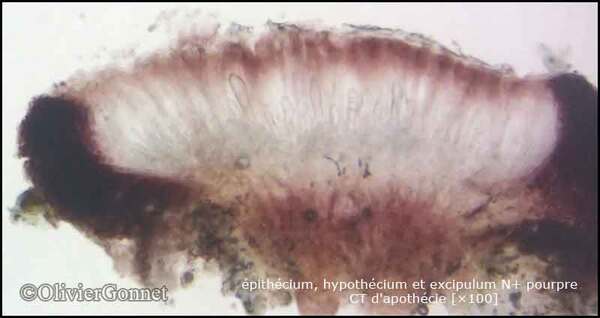
Courtesy Danièle et Olivier Gonnet - Source: https://www.afl-lichenologie.fr/Photos_AFL/Photos_AFL_F/Farnoldia_micropsis.htm
France, Pré des Fabres, alt. 2022 m - sur bloc calcaire - Uvernet-Fours - Alpes-de-Haute-Provence
23/7/2014
Growth form: Crustose
Substrata: rocks
Photobiont: green algae other than Trentepohlia
Reproductive strategy: mainly sexual
Commonnes-rarity: (info)
Alpine belt: rather common
Subalpine belt: rather rare
Oromediterranean belt: very rare
Montane belt: absent
Submediterranean belt: absent
Padanian area: absent
Humid submediterranean belt: absent
Humid mediterranean belt: absent
Dry mediterranean belt: absent

Predictive model
| Herbarium samples |


P.L. Nimis; Owner: Department of Life Sciences, University of Trieste
Herbarium: TSB (32923)
2001/12/09


P.L. Nimis; Owner: Department of Life Sciences, University of Trieste
Herbarium: TSB (32923)
2001/12/09

Courtesy Danièle et Olivier Gonnet - Source: https://www.afl-lichenologie.fr/Photos_AFL/Photos_AFL_F/Farnoldia_micropsis.htm
France, Pré des Fabres, alt. 2022 m - sur bloc calcaire - Uvernet-Fours - Alpes-de-Haute-Provence
23/7/2014

Courtesy Danièle et Olivier Gonnet - Source: https://www.afl-lichenologie.fr/Photos_AFL/Photos_AFL_F/Farnoldia_micropsis.htm
France, Pré des Fabres, alt. 2022 m - sur bloc calcaire - Uvernet-Fours - Alpes-de-Haute-Provence
23/7/2014

 INDEX FUNGORUM
INDEX FUNGORUM
 GBIF
GBIF
 DOLICHENS
DOLICHENS
